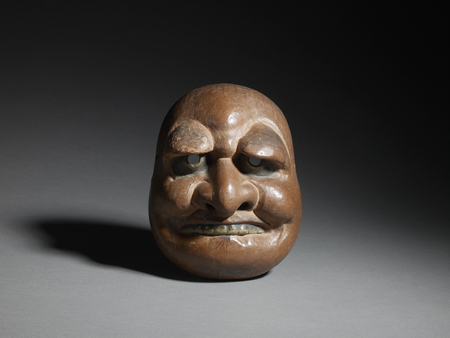Product Description
7285 A wood Kyōgen mask of Buaku
Inscribed:
Right: Bishū Zentoku-ji
Left: Ho Kōka kinotomi ninen (Restored in the second year of the Kōka era 1845)
Japan 18th century
Dimensions: H. 8¾” x W.6¾” (22cm x 17cm)
The faintly comical demon mask of Buaku also appears in Noh theatre and is represented as the character O-Beshimi.
Although depicted as a somewhat ferocious character he is actually rather timid and weak, as expressed in his sorrowful eyes. Buaku masks are typically painted a reddish-brown with drooping eyes and prominent jaw. He is usually biting his lower lip, exposing his top row of teeth. The mask is carved from a single piece of cypress, with the features in high relief.
Kyōgen theatre (lit. wild words) is thought to stem from Sarugaku, a form of Chinese entertainment brought to Japan around the 8th century. It was a popular form of entertainment which included such elements as mime, acrobatics and magic encompassing both drama and comedy. By the 14th century, these contradictive forms of Sarugaku had become known as Noh and Kyōgen, respectively.







